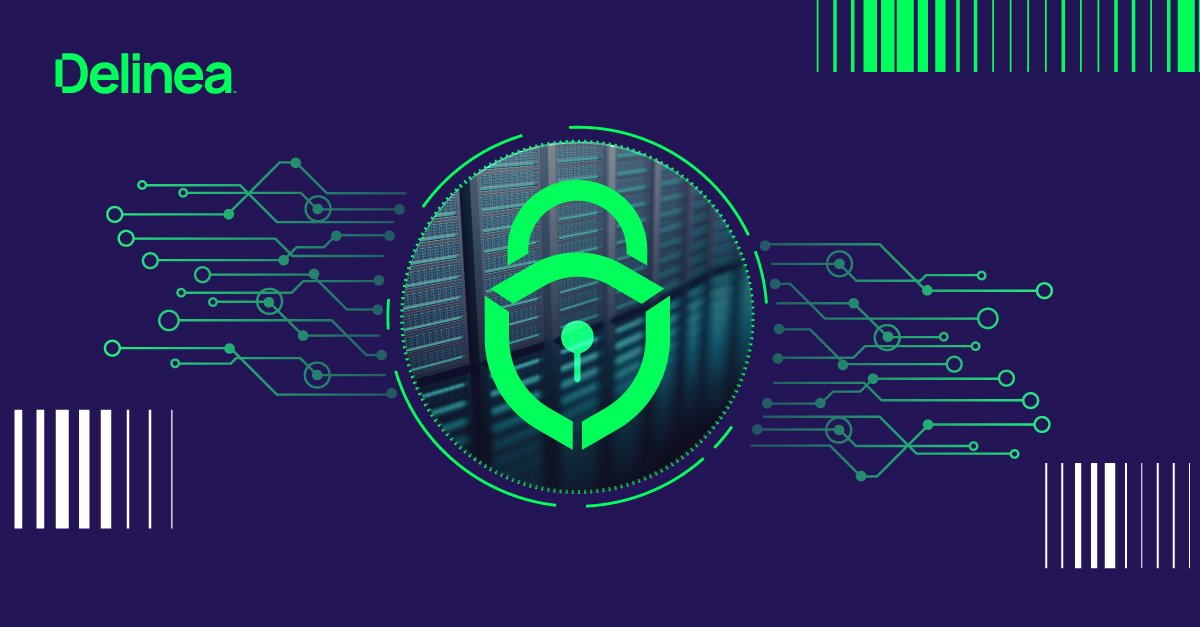How to mitigate AI-powered social engineering attacks
AI is transforming social engineering attacks, those insidious deceptions engineered to abuse the trust of employees and other insiders to gain privileged access.
AI can convincingly simulate identities across multiple channels and formats, making AI-powered social engineering attacks more convincing and likely to fool even the savviest, most security-conscious employees. Additionally, AI can execute attacks at scale, learn from its successes, and continually become smarter and stealthier.
How can you identify these sophisticated attacks so you can defend against them? Privileged access controls for vaulting, identity security, and authorization best practices can help.
In this blog post, you’ll learn how AI-powered social engineering attacks are operating today and what’s coming down the line. Then, you can prepare your front-line employees to identify the red flags and set up systems and processes behind the scenes to mitigate risk.
5 common formats for social engineering attacks
While it may seem clichéd to say that AI-powered social engineering attacks are “ever-evolving,” they truly are. Here’s a list of five social engineering techniques currently being turbocharged by AI.
Learn how each technique operates, how to defend against it, and what to prepare for in the future.
1. AI-generated emails that mimic trusted colleagues
How does it work?
AI-generated emails are a type of spear phishing. They target individuals with access and exploit trust in the internal hierarchy by using authoritative language and tone to manipulate the target into taking action they might not otherwise (e.g., clicking a link to gain access to a database, sharing privileged credentials, or approving third-party access).
What does it look like?
AI agents can generate emails that mimic the tone, grammar, and context of similar communications employees have received and acted on in the past. Attackers use these messages to impersonate executives, managers, IT staff, or partners with urgent or sensitive requests.
How do you protect against AI-enhanced emails?
To reduce risk of unauthorized access, use Privileged Access Management best practices to enforce just-in-time access, dual approvals, and workflow justification. Reject privilege elevation attempts that lack the right context, like time or location, even if the request appears to come from leadership.
What’s on the horizon?
Social engineering emails powered by AI will become nearly indistinguishable from genuine correspondence, leveraging advanced AI to analyze entire organizational communication histories, project files, and even internal slang. Attackers will automate the creation of highly targeted, context-aware messages that reference real-time company events or confidential projects, making detection by both humans and traditional security systems extremely difficult.
2. Voice deepfakes and voicemail phishing

How does it work?
Voice phishing, otherwise known as “vishing,” leverages the authority and urgency of a recognizable voice (e.g., a CEO or VP) to bypass rational checks. They are delivered via mobile phone or directly via voicemail.
What does it look like?
AI tools can now clone a person’s voice based on a short sample, which may be publicly available online, sourced from webinars, podcasts, press interviews, or the like. Attackers use voice phishing to simulate urgent requests from senior leaders, often bypassing written communication entirely.
How do you protect against AI vishing?
Identity security solutions are essential for verifying identities before granting access. Imagine your database administrator gets a request from the CEO at 3 AM, asking for privileged access to a system they don't usually use. Now, the admin probably has the permissions needed to access the system, even if the CEO doesn't, because the request is for the admin to do the work.
Here's where multi-factor authentication (MFA) comes in handy. It can be enforced when logging in or elevating privileges. But even if MFA passes, there's another layer of security—seeking approval for privilege elevation. An approver might spot the oddity of the request and deny it. Let’s say the admin proceeds and provide access. An identity security solution that tracks anomalous behavior can detect an unusual login (likely from an unexpected IP address) and flag it for your security team to review.
What’s on the horizon?
Voice cloning will require only seconds of publicly available audio to perfectly replicate any voice, including subtle emotional cues, accents, and speech patterns. Attackers will use these deepfakes for real-time phone calls, urgent voicemails, and even to bypass voice-based authentication systems. Scams will become more emotionally manipulative and convincing, targeting not only individuals but entire organizations with coordinated campaigns.
3. Synthetic video and real-time impersonation in calls

How does it work?
Real-time impersonation leverages deepfake technology to mimic the way an authoritative person looks and interacts. They create an AI-powered representation of a person who asks others to do their bidding.
What does it look like?
Threat actors deploy deepfake video avatars to impersonate trusted internal figures during live calls or pre-recorded messages. They may direct technical or finance staff to take immediate actions that compromise security.
How do you protect against impersonation technology?
Privileged Access Management (PAM) should enforce session justification and approvals. All privileged operations must be tied to identity-based policies, not rely on assumed presence in a video call.
What’s on the horizon:
Real-time deepfake video will allow attackers to impersonate executives, colleagues, or even family members during live video calls. These synthetic personas will respond interactively, adapting to questions and context, making it nearly impossible for recipients to spot the deception. Such attacks could be used to authorize fraudulent transactions, leak sensitive information, or manipulate decision-making at the highest levels
4. Fake internal documents and AI-crafted memos

How does it work?
Created using AI, fake documents disguise malicious content or misinformation as legitimate internal communication to prompt unsafe behavior.
What does it look like?
Attackers generate internal-looking policy docs, onboarding materials, or IT instructions. These documents can convincingly spoof HR, IT, or executive communications, making employees more likely to respond.
How do you protect against AI-generated fake internal content?
To prevent attackers from inserting AI-generated documents into internal systems, start by locking down identity and access with strong defenses: enforce phishing-resistant MFA, continuously assess device trust, and treat identity as your primary security perimeter.
Implement least privilege and just-in-time (JIT) access so users and service accounts only gain elevated rights when needed, minimizing the attack surface and reducing the risk of internal misuse.
Finally, layer in real-time threat detection, including anomaly detection on document uploads (e.g., new SharePoint files from low-activity accounts), unusual admin account creation, or off-hours access—leveraging monitoring to catch the subtle signs of compromised credentials or fake content injection. This defense-in-depth strategy makes it significantly harder for adversaries to gain a foothold or deploy convincing AI-generated content internally.
What’s on the horizon?
Fake internal documents and AI-crafted memos will be generated rapidly, filled with insider details scraped from both public and private sources, making them almost indistinguishable from genuine communications and enabling highly targeted, automated phishing campaigns. Attackers will be able to launch convincing, large-scale frauds with minimal effort, putting entire organizations at risk.
5. AI-driven chatbot interactions and UX spoofing

How does it work?
This technique exploits users’ trust in internal support systems like IT help or HR portals to extract sensitive information or redirect users to take malicious actions.
What does it look like?
Fake helpdesk bots or user interfaces can harvest privileged credentials or route users to malicious systems under the guise of support.
How do you protect against UX spoofing?
To access internal systems, such as IT or HR portals, employees should retrieve secrets from a centralized password vault that verifies their identity and tracks their access. They shouldn’t be allowed to share those passwords or store them in their browsers. Identity security solutions must govern LLM or AI agent access, just as it should for all human and machine identities.
What’s on the horizon?
Spoofed chatbots and AI-driven impostor interfaces will convincingly pose as internal support or IT systems, extracting sensitive data through extended, context-aware conversations; as organizations increasingly rely on chatbots, these attacks will become more frequent and effective.
The sophistication of these bots will mean even tech-savvy users may be tricked into sharing credentials or following malicious instructions.
Seven critical security questions to ask about AI-powered social engineering
To help you prepare to defend against these AI-enhanced social engineering threats, here are some key questions to consider:
1. How do I train employees to spot AI-generated phishing emails when they look so real?
Legacy training methods often fall short in the face of sophisticated AI-generated phishing emails. These emails lack the typical red flags, making them harder to detect.
To address this, adopt dynamic training programs that simulate real-world scenarios using AI. Regular phishing simulations, combined with interactive training sessions, can help employees recognize subtle cues and develop a critical eye. Encourage a culture of skepticism where employees feel empowered to question unexpected requests, even if they appear legitimate.
2. Can voice or video deepfakes really trick my team—and how do I protect against that?
Non-technical staff are particularly vulnerable to deepfakes, as they might trust a familiar face or voice without hesitation.
To mitigate this risk, implement multi-factor authentication for sensitive transactions and communications. Educate your team about the existence and risks of deepfakes and establish protocols for verifying requests that involve sensitive information or actions. Encourage employees to verify unusual requests through a secondary communication channel, such as a phone call or in-person confirmation.
3. What security controls can stop users from acting on a fake internal memo or chatbot?
Employees often follow internal processes without question, especially when communications appear to come from IT or HR.
To prevent this, implement robust email filtering and verification systems that flag suspicious internal communications. Use digital signatures and encryption to authenticate official memos and chatbot interactions. Additionally, train employees to recognize and report suspicious communications, and establish clear procedures for verifying the authenticity of internal messages.
4. Are our privileged accounts protected from social engineering, even if a user gets tricked?
An attacker doesn't need a full breach to cause damage; they just need one person to "approve something."
To protect privileged accounts, implement least privilege access controls and regularly review permissions. Use Privileged Access Management solutions to monitor and control access to sensitive accounts. Encourage a culture of vigilance where employees are aware of the potential consequences of approving requests without proper verification.
5. How do I prevent my team from accidentally using vault credentials on spoofed sites?
Under pressure, well-meaning admins or developers may not verify domains before entering credentials.
Educate your team about the risks of spoofed sites and encourage them to double-check URLs. Regularly update your security policies to include guidelines for verifying website authenticity.
6. What policy changes should I make to limit the impact of AI-assisted impersonation?
Existing policies often assume human adversaries and may not account for AI's scale or realism.
Update your security policies to include guidelines for handling AI-generated threats. Implement continuous monitoring and anomaly detection systems that can identify unusual patterns indicative of AI-assisted attacks. Encourage a proactive approach to security, where employees are trained to recognize and respond to AI-generated threats.
7. Is it possible to detect AI-generated content in real time inside my organization?
Security teams need automated tools—not just awareness—to flag fakes.
Invest in AI-driven security solutions that can analyze and detect AI-generated content in real time. These tools can help identify anomalies and flag suspicious communications before they reach their employees. Additionally, foster a culture of continuous learning and adaptation, where security teams stay informed about the latest AI threats and technologies.
Identity-first defenses are critical to combat AI-powered social engineering
The human trust layer is now a prime attack surface. Traditional perimeter defenses are no match for convincingly faked identities. As a security leader, you must shift from detection to prevention, with identity-based controls as the foundation for resilience.



